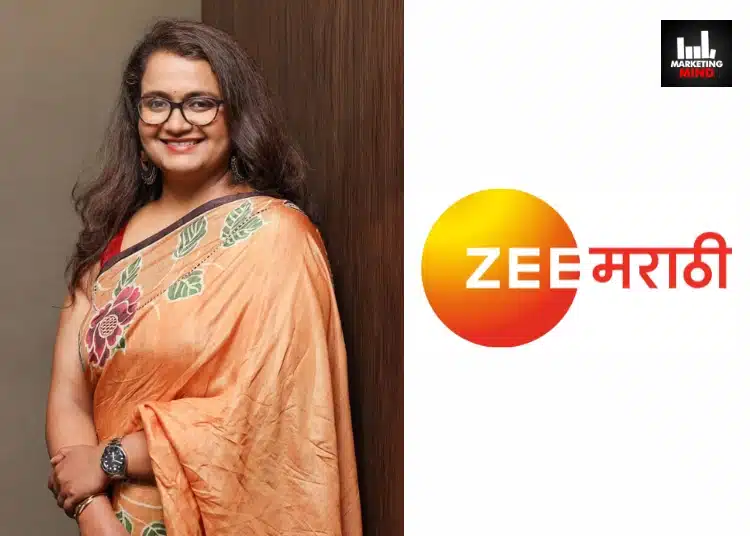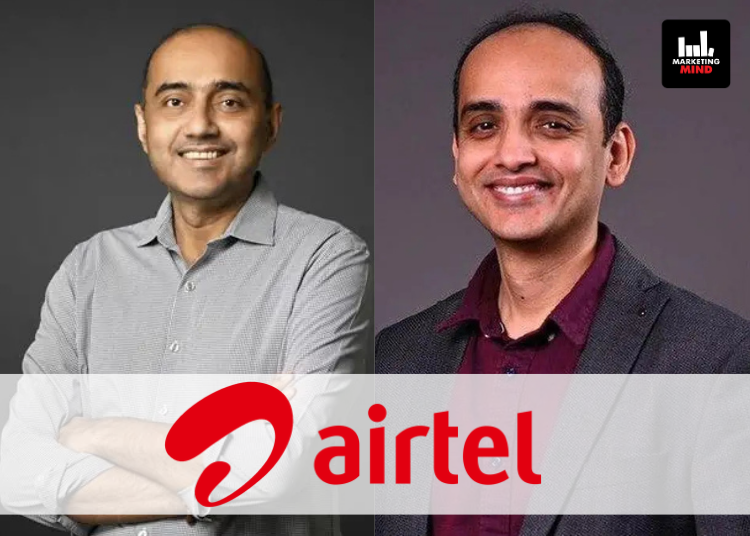As Zee Marathi celebrates its 25th anniversary, V. R. Hema, Chief Channel Officer, shared her thoughts on the milestone, emphasising that Zee Marathi is more than just a platform, it’s the energy, the sense of community, and the fraternity that has come together today.
Hema underscored that over the last 25 years, this channel has essentially shaped the Marathi entertainment ecosystem. Many have kick started their careers here, and numerous people attribute their success and major milestones to this very channel.
“What’s remarkable is how the channel has expanded beyond television into films and theatre, establishing its presence across the entire entertainment landscape. As Siju mentioned, we feel incredibly fortunate and grateful to be part of this legacy. It’s also a great responsibility to carry forward a brand that has left such a profound impact on its audience. We’re genuinely excited about the future and hope to continue building on this foundation for the next 25, and hopefully 50, years to come,” Hema said.
Furthermore, she added that in 1999, the channel made its debut, and over the past 25 years, it has gone through several transformations, evolving with the times. Recently, the channel underwent a rebranding, but this is part of its ongoing adaptation. A key highlight of this journey is the channel’s reputation for pioneering ideas in the market, setting numerous firsts. For instance, it introduced Maharashtra’s first “go to home” format reality show, with over 8,000 episodes, and launched some of the earliest non-fiction reality formats, including the iconic Sa Re Ga Ma Pa, a network IP, along with several long-running original IPs.
“The channel also brought in the first film award show, the first television award show, and even institutionalised a woman empowerment award. In fiction, it produced the first mythological show ‘Jai Malhar’, and more recently, it introduced ‘Lakhat Ek Amcha Dada’, a unique show centred on the brother-sister dynamic, with the brother as the lead character. Innovation and pioneering have been at the heart of the channel’s journey, marking key milestones along the way,” Hema said.
“Like any brand, the channel has experienced a life cycle of ups and downs, leading the market, losing leadership, regaining it, and then striving to climb back to the top again. However, one thing that has remained constant is the unwavering faith and trust of the audience, who continue to give the channel opportunities,” she added.
Adding on to what Hema said, Siju Prabhakaran, Chief Cluster Officer for South and West at ZEE Entertainment Enterprises, emphasised that Zee Marathi has always been more than just a single channel. Beyond Zee Marathi, they expanded to launch Zee Talkies as their movie channel, followed by Zee Yuva and Zee Chitramandir.

“The success of Zee Marathi laid the foundation for Zee to build an entire network of channels. Similarly, when Zee ventured into movie production, some of the most iconic and blockbuster films in the Marathi film industry came from the Zee banner. There has always been a symbiotic relationship between our TV and movie businesses,” he said.
“At one point, we were even publishing magazines, further shaping the cultural landscape of the Maharashtrian audience. We take pride in this impact. A brand line like ‘Mi Marathi Zee Marathi’ is incredibly powerful, and we try to then take it to other markets,” he added.
Hema discussed some of the significant changes Zee Marathi has undergone over the years, emphasising, “Among Maharashtrian audiences, particularly women, we’ve historically prided ourselves on being austere, simple, and low-profile. However, there has been a noticeable shift in recent years. The mindset has evolved from austerity to abundance, from a minimalist approach to life towards exploring how to achieve more and enrich one’s life further.”
She went on to say that this transformation is particularly evident among women in Maharashtra. While community values still hold great importance, there’s now a greater emphasis on individuality and personal identity. Women are increasingly seeking meaning in life through their unique experiences and aspirations. This change is reflected in the narratives seen today, with more underdog stories gaining prominence. The journey from an underdog to a winner resonates deeply with people, as many are looking for opportunities and a fair chance in life.
“When comparing fiction and non-fiction content, it’s not about one being better than the other, but rather about content quality. Definitely, fiction is the mainstay because that gives you stickiness and repeat viewing. But non-fiction is what drives reach, newness and impressions to the channel. Zee, fortunately, has a strong portfolio of non-fiction formats,” Hema said.
“Recently, we launched a new show, Jau Bai Gavaat, where 11 city girls experience village life, and it performed exceptionally well, expanding our channel’s reach. Continuing to experiment with new and innovative non-fiction formats, while also refreshing existing ones, should remain a key focus,” she added.
Meanwhile, Prabhakaran said that at a broader consumer level, patience for repetitive stories is minimal. So how does a brand or channel keep up with this shift? Today’s audience consumes a vast amount of digital and short-form content and is exposed to the best in filmmaking.
“This has drastically changed the expectations for TV content production. To keep viewers engaged, especially in fiction, you now need to deliver a cinematic experience. When addressing the shift towards short-form content, the storytelling must evolve. Unlike 20 years ago, where family dynamics were enough to carry a story, today’s viewers connect with narratives like a father-daughter bond or a young woman succeeding at work. These stories resonate much more now,” he said.
Prabhakaran also highlighted that on the technical side, there’s been a significant enhancement in production methods, from multi-camera setups to outdoor shoots, and from advanced digital imaging (DI) to improved sound and editing techniques. Post-COVID, these changes have accelerated even more. Additionally, one can no longer prolong a story just because it’s performing well. In the past, shows could run for 500, 600, or even 800 episodes. Now, viewers expect a clear beginning, middle, and end, and it’s crucial to stick to the original vision of the show.
“While we strive to stay aware of evolving consumer preferences, mistakes are inevitable, but they should be new mistakes as part of the learning journey,” Prabhakaran said.
When asked about high-impact channel marketing strategies to enhance brand visibility and drive sales growth, Hema highlighted a few key approaches. First, she emphasised the importance of building character affinity. According to her, the most significant driver of channel loyalty is the audience’s love for the characters. Therefore, a large portion of their communication strategy focuses on amplifying characters, not just the shows or properties. This involves creating deeper connections by making characters stand for issues that resonate with women today and incorporating them into popular culture.
Another key focus is expanding their market reach. Hema acknowledged that there are specific markets where challenges exist, so they employ highly targeted marketing campaigns, both digitally and through on-ground activations, to address these areas effectively.
In terms of sales growth, Hema stressed that their primary goal is to deliver conversions for clients. To achieve this, they aim to build better integration opportunities by fostering stronger synergies between the brand and their characters, as well as between the brand and their content.
Hema discussed the plans for the festive season, stating, “We have the Zee Marathi Awards, which are our biggest television awards, planned around the festival season. Recently, we held a major event during Dahi Handi and followed it with another during Ganesh Chaturthi. Typically, our fiction shows pick up pace during festivals, and we are planning to launch a non-fiction show post-Diwali. Additionally, even though it’s outside the festival period, we have two major films lined up: Dharmaveer 2, which was just released this week, and Ek Number, set to release on October 10. These films will be significant for the network.”
“We currently have 7.5 million followers on Facebook and 10.2 million on YouTube, which are impressive numbers for regional content. Our viewers spend almost an hour and a half with us daily. We’ve built a strong ecosystem around the brand, whether through magazines, festivals, or traditions like Mangalagaur and Vat Purnima. For example, during a recent brainstorming session, we discussed how to make Vat Purnima, a traditional festival, trend on social media. Women traditionally dress up, perform the puja, and celebrate, but we wanted to engage with them in a way that created a social media buzz. We decided to produce a new song for Vat Purnima, most of the existing songs are quite dated and unused,” she added.
Hema highlighted that the response was incredible, with the song inspiring a huge number of reels and generating about a million views across various videos. This is just one example of how we stay relevant. Along with celebrating festivals, they also focus on remaining topical by engaging with current societal events and pop culture, reflecting them in our content and social media presence.
Prabhakaran highlighted that consider a Zee Marathi viewer who was around 23 or 24 years old when the channel launched back in 1999. Today, that viewer is likely in their mid-40s or early 50s and may now have a child who is also in their early 20s. For many Maharashtrian families, Zee Marathi has been a constant presence in their lives, becoming a part of their upbringing and culture.
In conclusion, he said, “The brand holds a significant legacy, providing us with a unique advantage of being deeply rooted in tradition. However, while maintaining this strong connection, we’ve also adapted to meet the expectations of the younger generation. Television, as a medium, offers co-viewing opportunities, but it comes with the responsibility of staying relevant. In a time when digital platforms and various viewing options dominate, we continually work on ensuring Zee Marathi remains a channel that appeals to all generations.”
















